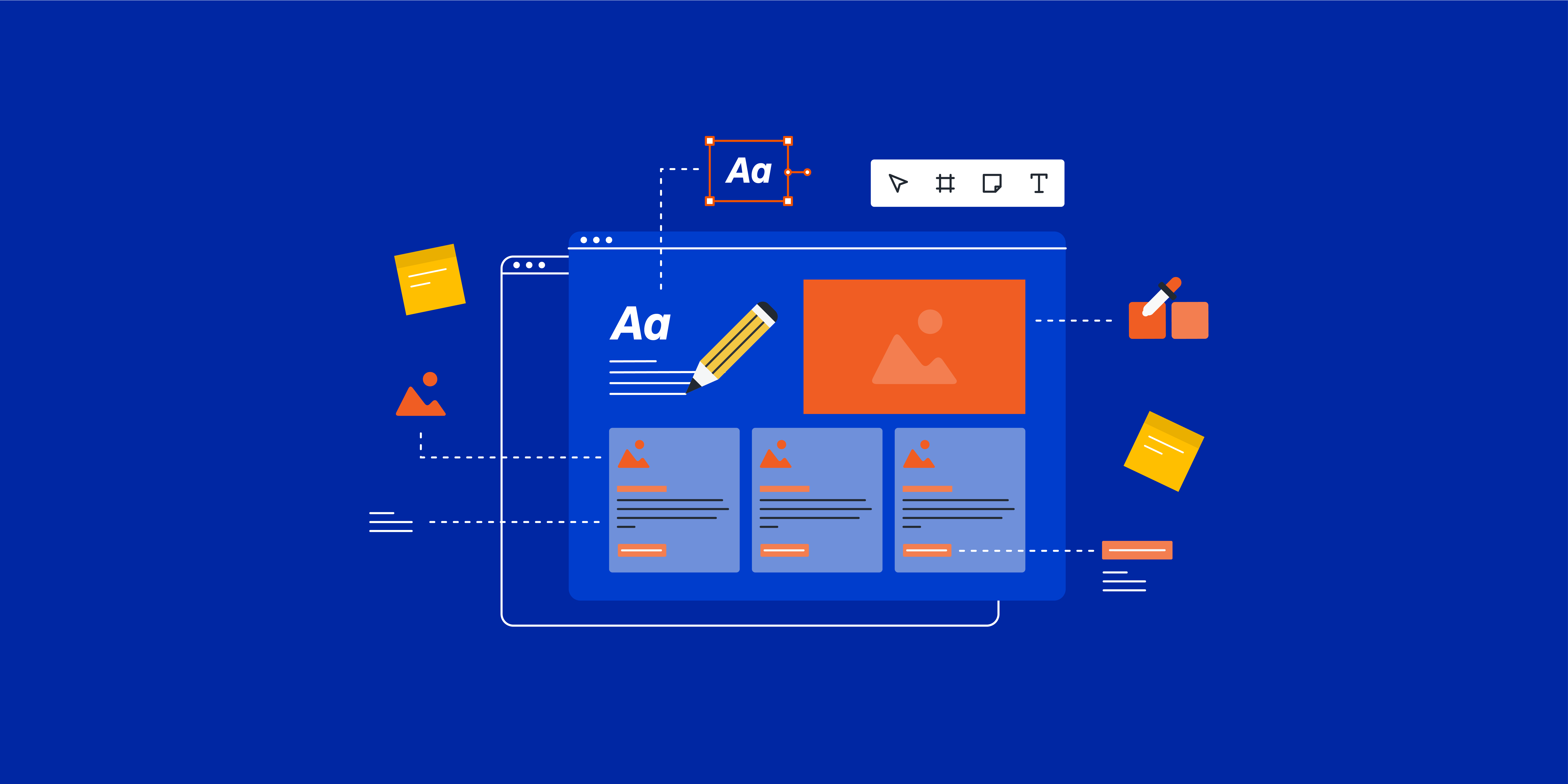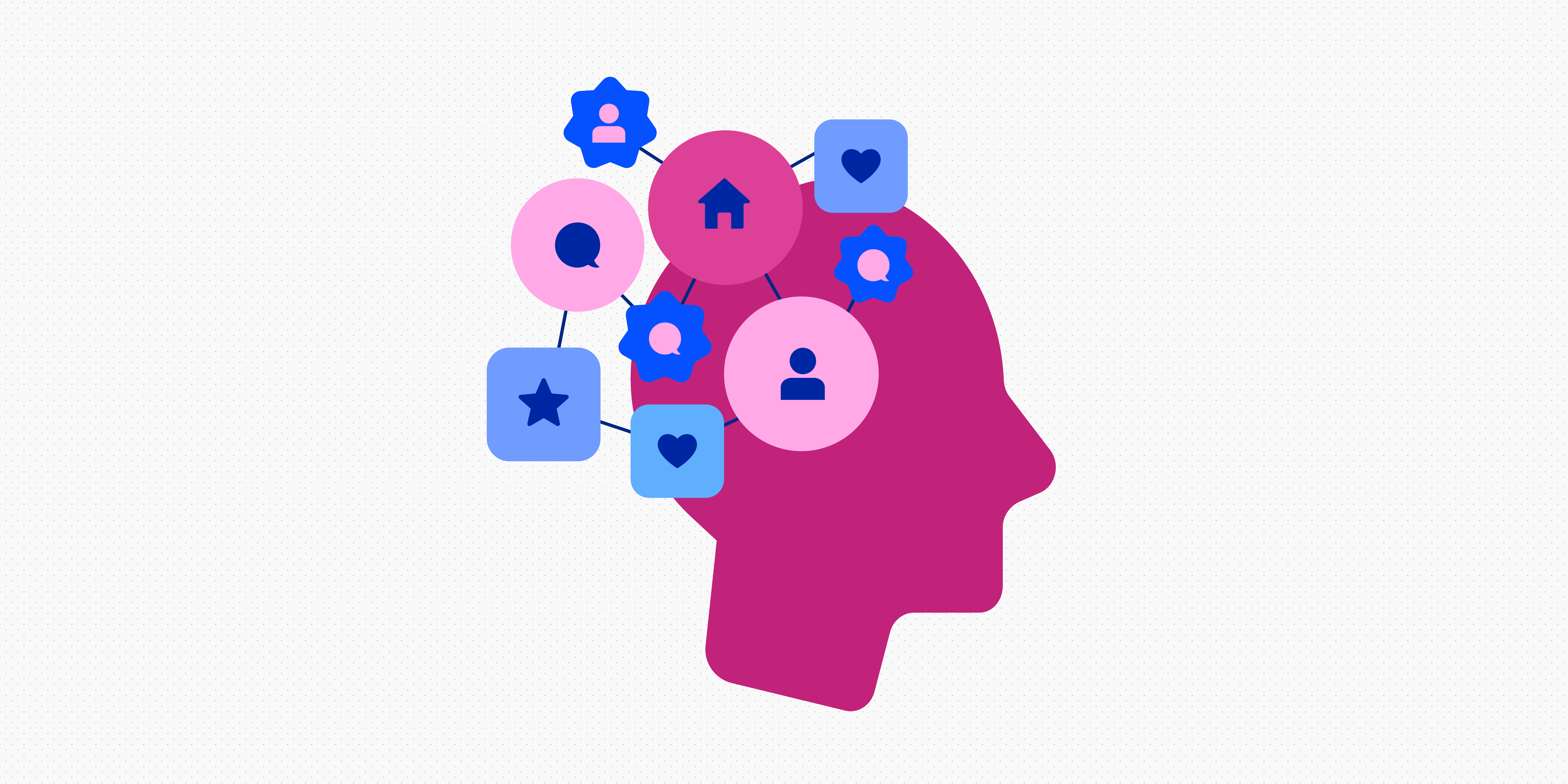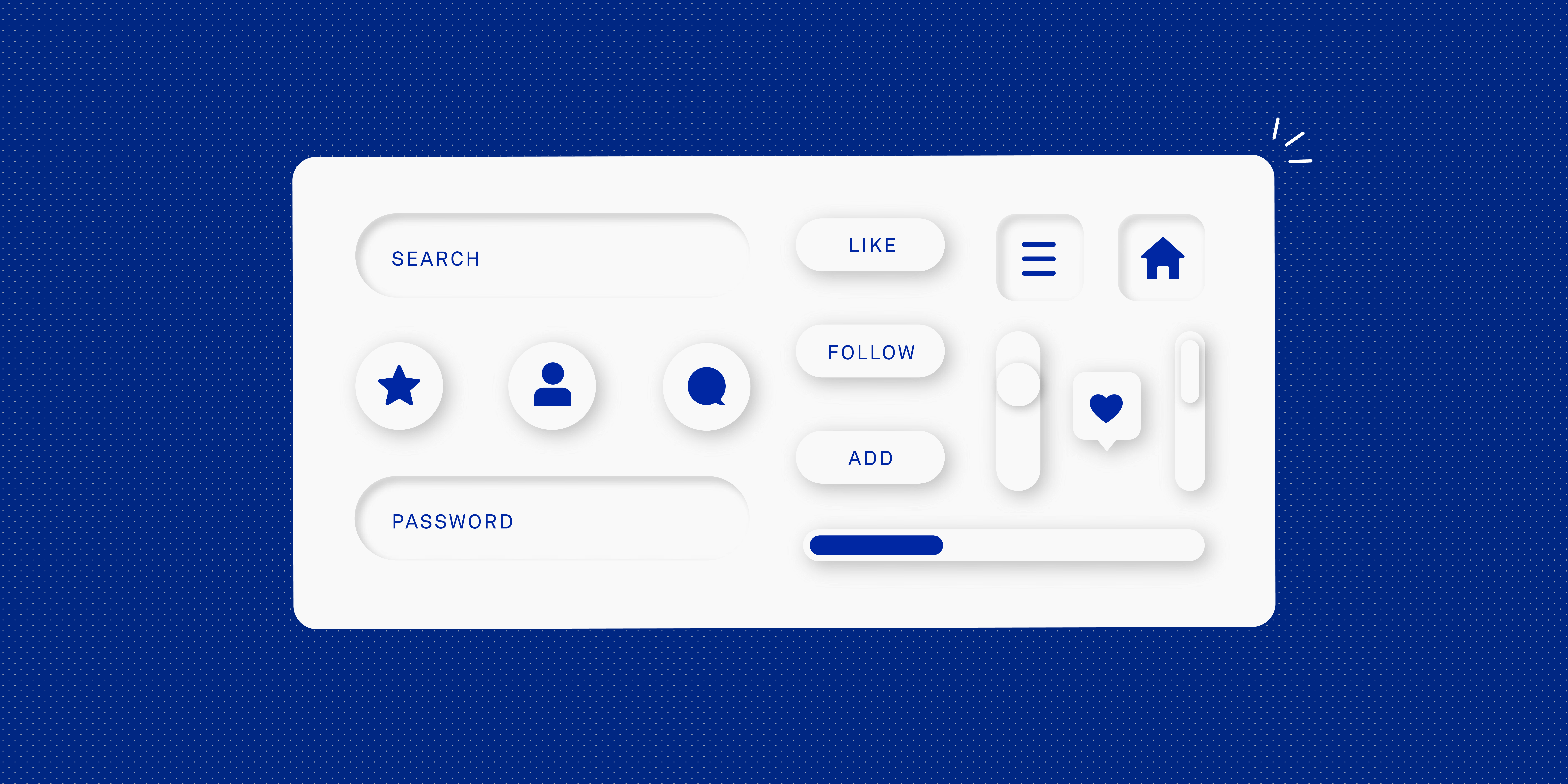In today’s digital landscape, crafting a memorable user experience is crucial for the success of any website or app. While content and design are separate disciplines, you need both to captivate users, drive conversions, and leave a lasting impression.
Content delivers information and conveys compelling messages, while design brings those messages to life with beautiful visuals and branding. Without synergy between the two, your digital product can fall flat.
In this blog post, we’ll explore the symbiotic relationship between content and design—from which brands have nailed the balance of both, to some tips and tricks for ensuring your content works with your design (and vice versa).
We’ll cover:
Let’s get started!
What is content design?
Content design is a multidisciplinary discipline that involves planning, creating, and organising content in a way that’s engaging and effective for the target audience. When you hear the word ‘content’, you might think of text—but content design encompasses all forms of content, from graphics and images to videos and podcasts.
To ensure the content is engaging, accessible, and reflective of user needs, content designers carry out extensive user research on an ongoing basis. By gaining a deep understanding of the target audience, they can create and refine their content to ensure the digital product balances user needs with business goals.
Moreover, content design isn’t just about creating content; it also encompasses the structure and organisation of the content. A well-designed piece of content takes the user on a journey, seamlessly guiding them from one section to another while resonating with them on an emotional level. You can read more about content design in our comprehensive guide.
What is the relationship between content and design?
When it comes to the relationship between content and design, it’s essential to view them as interconnected elements that work together to deliver a message effectively (rather than separate entities).
Imagine navigating a beautifully designed website with stunning visuals, but the content is poorly written or lacks substance. The design might catch your eye at first, but without meaningful and engaging content, the experience falls flat. On the other hand, if the content is compelling and well-written but presented in a visually unappealing way, it’ll fail to capture your attention.
This scenario is all too common and demonstrates just how crucial it is to have well-designed content. Instead of overpowering or distracting from the content, good design should enhance and support the intended message.
Design can even shape the content itself, influencing its structure and format. Design can help you break the content into logical sections with headings and subheadings to avoid overwhelming users with big blocks of text. Using suitable typography and colours and incorporating visual elements like images, graphics, or videos, design can create a visually appealing and easily scannable piece of content that keeps the reader engaged.
Let’s consider five reasons why the design of your content is just as important as the content itself:
- Visual impact: Design elements like layout, colour schemes, and typography significantly affect how users perceive content. A visually appealing design captures users’ attention and creates a positive first impression which sets the tone, establishes credibility and entices users to explore further.
- User experience: The design of content directly influences the user experience. A well-designed layout with clear navigation and an intuitive interface enhances usability, reduces friction, and guides users seamlessly through the information.
- Readability: Design choices like font selection, size, and spacing directly impact readability and comprehension. Carefully selected typography enhances legibility, making the text easier to read and understand, while proper formatting, headings, and subheadings help users quickly scan and digest the content.
- Emotional connection: Design has the power to evoke emotions and create a deeper connection with the audience. You can elicit specific emotions in your audience by choosing visuals and design techniques that align with the intended tone and message.
- Branding and consistency: Design plays a vital role in establishing and maintaining brand identity and consistency. When content design aligns with the brand’s visual guidelines, it strengthens brand identity and fosters trust among users.
Read next: What is a content designer and what do they do?
How to effectively design your content in 5 steps
Now that we understand the nature (and importance) of the relationship between content and design, let’s explore how to effectively design your content for maximum impact.
1. Define your audience and objectives
Before diving into the design process, you need a clear understanding of your objectives and target audience. Determine the purpose of your content and the specific goals you aim to achieve. Are you educating, entertaining, or inspiring your audience?
Then, you’ll need to identify your target audience’s characteristics, preferences, and needs. These insights will guide your design decisions and ensure your content resonates with your users.
2. Establish a visual hierarchy
It might be tempting to start creating content at this point, but effective content design starts with a well-structured and organised layout. In other words, the information architecture.
You’ll need to break your content into logical sections and use headings, subheadings, and bullet points to map what content you’ll put where to ensure a logical, intuitive flow of information. Pay attention to whitespace, which provides breathing room and improves the overall visual appeal.
3. Choose engaging visuals
When it comes to designing content, visual elements play a pivotal role. They not only capture attention but also convey information effectively, enhancing the overall impact. To make your content visually appealing, it’s important to choose high-quality images, illustrations, graphics, or videos that are visually stunning, align with your objectives, and resonate with your specific audience.
4. Create a consistent brand identity
Both content and design make up a brand’s identity—and reinforce that identity to your audience. To nail this step, it’s worth crafting a visual style guide that includes colour schemes, typography, and graphic elements, as well as messaging, language, and tone of voice (you’ll need both content and design teams to collaborate on this one!).
Once you’ve established your visual style guide, you’ll need to consistently apply these elements across your content to build a cohesive and recognisable brand presence.
5. Test, iterate, and improve
Content design isn’t a one-time thing. User needs are constantly evolving, and your content should evolve with them.
After implementing your initial design, it’s crucial to gather feedback and meticulously analyse its impact. Paying attention to user engagement metrics (i.e. time spent on page and click-through rates) and A/B testing to experiment with different messaging will help you optimise your content for maximum effectiveness.
3 examples of design supporting content
Now we’ve got a handle on the relationship between design and content, let’s look at the synergy between the two disciplines in action!
In this section, we’ll explore three brands that excel in content design—leveraging content and design to create impactful experiences.
Glossier
Glossier, the beauty brand that shook the industry when it was created in 2014, has become renowned for its minimalist and user-centric content design. With an unwavering commitment to inclusivity and self-love, Glossier crafts captivating narratives that effortlessly resonate with its audience.
Through a carefully curated palette of soft pastels, elegant typography, and mesmerising product photography, Glossier’s design choices amplify its empowering messaging and relatable stories. By wholeheartedly embracing these visual elements, Glossier manages to create a truly immersive and unforgettable brand experience that leaves a lasting impression on its loyal global customer base.
Trello
Project management tool Trello is the perfect example of a seamless integration between content and design. The platform’s content design revolves around simplicity, clarity, and user-friendliness.
Trello employs a visually appealing and clutter-free interface, with intuitive card-based organisation and subtle visual cues for enhanced user experience. With a primary focus on readability, every piece of content within Trello’s ecosystem is thoughtfully crafted to be concise, action-oriented, and results-driven—providing users with crystal-clear instructions and guidance.
When it comes to design, Trello elevates its simple interface with a vibrant colour scheme and dynamic typography.
Dollar Shave Club
Dollar Shave Club, a popular subscription-based grooming products company, truly stands out in their content design approach. They masterfully infuse a delightful blend of humour and storytelling into their brand, captivating their audience at every touchpoint. From their meticulously crafted website to their marketing materials, Dollar Shave Club’s commitment to witty and relatable content is a testament to their creative chops.
The content and design at Dollar Shave Club work in perfect harmony to engage their target audience. Bold colours command attention, while playful illustrations add a touch of whimsy. The unique typography further enhances their playful messaging, creating a cohesive brand experience.
Key takeaway
When content and design work together harmoniously, you get an immersive and impactful user experience. Content serves as the heart and soul of the message, conveying the information and engaging the audience. On the other hand, design acts as the vessel that enhances the delivery and amplifies the impact of the content. Through this interplay of visuals, typography, and layout, the message truly comes to life and captivates the user.
By understanding the importance of this relationship and implementing effective content design strategies, you’ll be well on your way to creating user experiences that set you apart from the competition—even in a crowded digital landscape.




